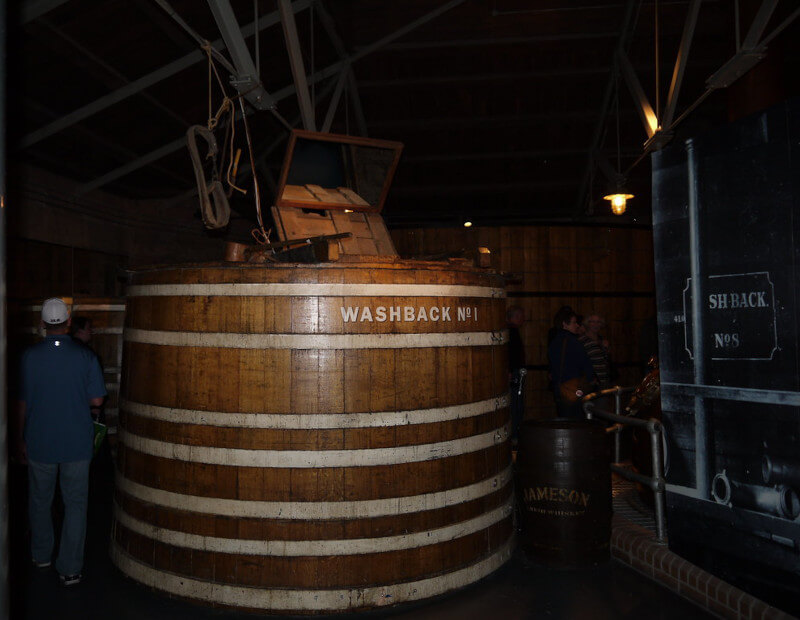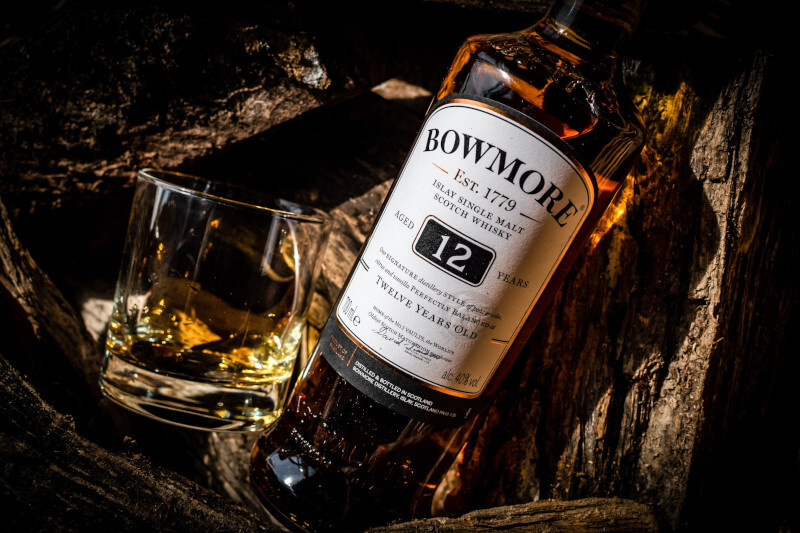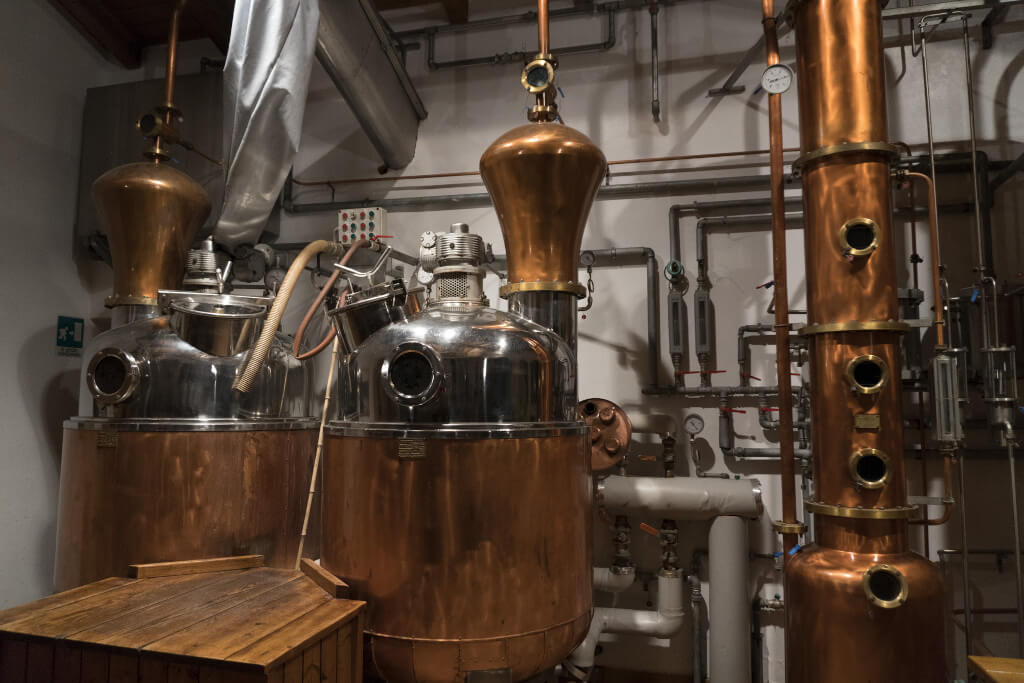Grains to Bottles
Whiskey is a unique and fascinating part of the enchanting world of distilled beverages. The distillation process brings out the spirit’s unique characteristics, from the sugary notes of a fine bourbon to the peaty essence of a classic Scotch. This essay will take you on a trip, delving into the science and art that go into making whiskey from ordinary grains. We’d love to have you along as we explore this fascinating method and reveal the stories behind each bottle of this rare liqueur.
The Ingredients – Flour, Water, and Yeast

Whiskey’s origins are important to remember before sipping the spirit for the first time. Grain, water, and yeast make up the bulk of the ingredients. However, the final whiskey is highly sensitive to the quality and selection of these components. whiskey is made from a variety of grains, each of which contributes its flavour profile to the final product. Scotch whiskey and Irish whiskey are based on barley, which is often malted, while bourbon is mostly made from corn.
Wheat imparts a smoother and softer profile, as observed in some bourbons and other whiskies, whereas rye contributes a peppery aspect, especially in rye whiskies. These flavours can be extracted with the help of water, preferably pure and soft water, and yeast, the unsung hero that converts the sugars in the grain into alcohol. As we delve deeper into the whiskey-making process, you’ll get a better feel for the delicate dance that goes into making your favorite whiskey.
Mashing
The mashing procedure is the first crucial stage in the whiskey-making alchemical journey. In the mashing stage, grains appropriate for the desired whiskey are pulverised and added to boiling water. The sugars in the grains are released into the water during this mixing process, yielding a sweet, starchy liquid called the mash. Sugar extraction and enzyme activity are both improved by the right combination of temperature and time, laying a solid groundwork for the rest of the whiskey-making process. The essence of the grains is extracted during mashing, laying the foundation for subsequent flavour and aroma development during distillation.
Fermentation
After the sugars are extracted during mashing, the fascinating fermentation process may begin. At this point, the yeast takes the front stage as they catalyse the mash’s transformation. The addition of yeast, nature’s miraculous catalyst, to the mash initiate fermentation, which converts the sugars taken from the mash into alcohol. Yeast will absorb the sugars and turn them into alcohol over many days. The “wash,” which is the liquid produced during fermentation, tastes a lot like beer. The wash, however, has a flavour and perfume all its own. It’s the first step in making the spirits that will become the whiskey in our cups, and it has all the promise of the final product.
Character and Complexity Development
The distillate goes through its last transformation into the exceptional whiskey we all know and loves through the careful art of ageing. The distilled liquor is then put into oak barrels, which will serve as its protective home for many years. The whiskey’s ultimate flavour is heavily influenced by the wood used in the ageing process, usually oak. Oak adds depth and complexity to spirits by imparting flavorful flavours, tannins, and compounds.
The fascinating voyage of flavour development takes place as whiskey ages in a barrel. Time, then, plays the role of a master sculptor, shaping the spirit and wood into a beautiful whole over many years in the barrel. Vanillin, lignin, and hemicellulose, all found in wood, are absorbed by the whiskey and add to its fragrant depth and complexity.
The flavour is also affected by the type of wood used and what was previously stored in the barrel. The vanilla, caramel, and oak spice notes come from the American oak barrels that were once used to age bourbon. European oak barrels, such as those previously used for sherry or wine, contribute a variety of flavours, including tannic bitterness, which comes through in the form of a touch of dried fruit and spice.
Maturation is Also Affected by How It is Stored
The development of whiskey is highly sensitive to environmental conditions within the ageing warehouse, including temperature, humidity, and ventilation. Whiskies made in distilleries located in different areas or climates may exhibit unique qualities as a result of these factors.
Consider the ripe fruitiness of a mature Highland Scotch or the caramelised sweetness of a bourbon that has seen some time in the barrel. These aromas and tastes have been patiently cultivated in oak barrels over many years.
As whiskey connoisseurs, we can appreciate the time and effort put into the aging process and take pride in the fact that each bottle contains a piece of the story of those formative years spent in the barrel. whiskey undergoes a lengthy maturation process that gives it its signature flavour, aroma, and extraordinary capacity to transport drinkers to a state of euphoric sensory pleasure.
The Last Stage: Bottling
The final, critical stage in making whiskey is bottling it so that it can be sold and consumed by the general public. This phase includes several crucial procedures, such as blending or diluting the whiskey and adhering to labelling rules, which tell consumers about the whiskey they are buying.
Whiskey may go through further processes, such as blending and diluting, before being bottled. Whiskies, specially blended whiskies, frequently undergo the blending process. To attain the required flavour profile and consistency, distillers choose and blend whiskey batches. By following these steps, we may ensure a finished product that is well-rounded and pleasing to a variety of tastes. Dilution, on the other hand, is the process of adding water to whiskey to reduce its alcohol concentration. To get the desired proof and make the whiskey more accessible, this is a common process.

Whiskey labels play an important role in alerting consumers about the product they are purchasing, which is why labelling regulations are in place. Although local legislation may vary, most nations have a minimum amount of information that must be displayed on a bottle of alcohol. Some of the information that is often included on a bottle of whiskey is as follows:
The label will tell you exactly what kind of whiskey you’re getting, whether it’s Scotch whiskey, Irish whiskey, bourbon, rye or single malt. The whiskey’s style and attributes can be better appreciated with this knowledge. Whiskey labels typically mention the distillery where the spirit was created. This helps whiskey aficionados determine the spirit’s provenance and status.
If the whiskey has been stored in oak barrels for a certain amount of time, the label will likely say so. Whiskies with higher stated ages are likely more complex and have more room to develop their flavours over time. The whiskey’s alcohol concentration (in terms of alcohol by volume, or ABV) must be listed on the bottle. Consumers can use this data to determine if the spirit is strong enough for their needs.
Some bottles will have a batch number or the date they were bottled printed on the label. whiskey aficionados who like to keep tabs on their collections or who have strong preferences for particular releases may find this data especially helpful.
Label Details
whiskey labels may also include information about the type of cask used for ageing, production procedures, tasting notes, and accolades earned, depending on local laws and company policy. By following the labelling rules, distilleries give customers the information they need to make an informed decision when buying whiskey.
The whiskey bottling process is the last step in the entire manufacturing cycle. The desired taste and texture can be achieved by blending or diluting the ingredients. Important pieces of information for whiskey customers can be found on the bottle’s label, including the whiskey’s kind, distillery, age statement, alcohol by volume (ABV), bottling date (or batch number), and more. These labels provide essential information for whiskey connoisseurs, allowing them to select the perfect bottle every time.
An Art Worth Admiring
Distillation is fundamental to making whiskey and is responsible for most of the spirit’s distinctive flavour and aroma. whiskey goes from crude components to refined and complex drinks through the processes of fermentation, distillation, and ageing. whiskey aficionados might gain a greater appreciation for the craft behind their favourite bottles by learning about and contemplating this production process.
Fun Facts
Here are a few amusing and interesting tidbits about whiskey and the distilling process to keep the article moving along:
- Whiskey’ comes from the Irish and Scottish Gaelic words “uisce beatha” and “uisge beatha,” respectively, which both translate to “water of life.” The cultural significance and esteem in which whiskey is held in Ireland and Scotland are reflected here.
- Many other types of spirits, including rum and tequila, are aged in previously used whiskey barrels. This method incorporates the previous whiskey aging’s flavour profile into the new batch, giving it more depth and complexity.
- The term “angel’s share” is used to describe the amount of whiskey that is lost to evaporation during the ageing process. This loss is typically welcomed by distillers because it helps concentrate flavours and character in the final product.
- Traditional pot stills are used in some whiskey distilleries, whereas column stills are used in others. Different types of stills produce whiskey with varying degrees of body and flavour, with column stills making whiskey that is more delicate and delicious.
- Even after being bottled, whiskey can continue to change and mature. Over time, the whiskey’s flavour may evolve slightly as a result of “bottle aging,” the process by which the spirit is exposed to air inside the bottle.
- These interesting tidbits shed light on the fascinating world of whiskey and are sure to pique the interest of whiskey aficionados and start lively debates among drinkers.
Understanding the distillation method and its impact on whiskey’s complex character is essential to appreciating the art of whiskey distillation. whiskey lovers can increase their knowledge and appreciation of the spirit by learning about how it’s made and trying out different varieties. The path of discovering whiskey is already fascinating and rewarding; adding interesting facts and trivia further enhances the experience.

